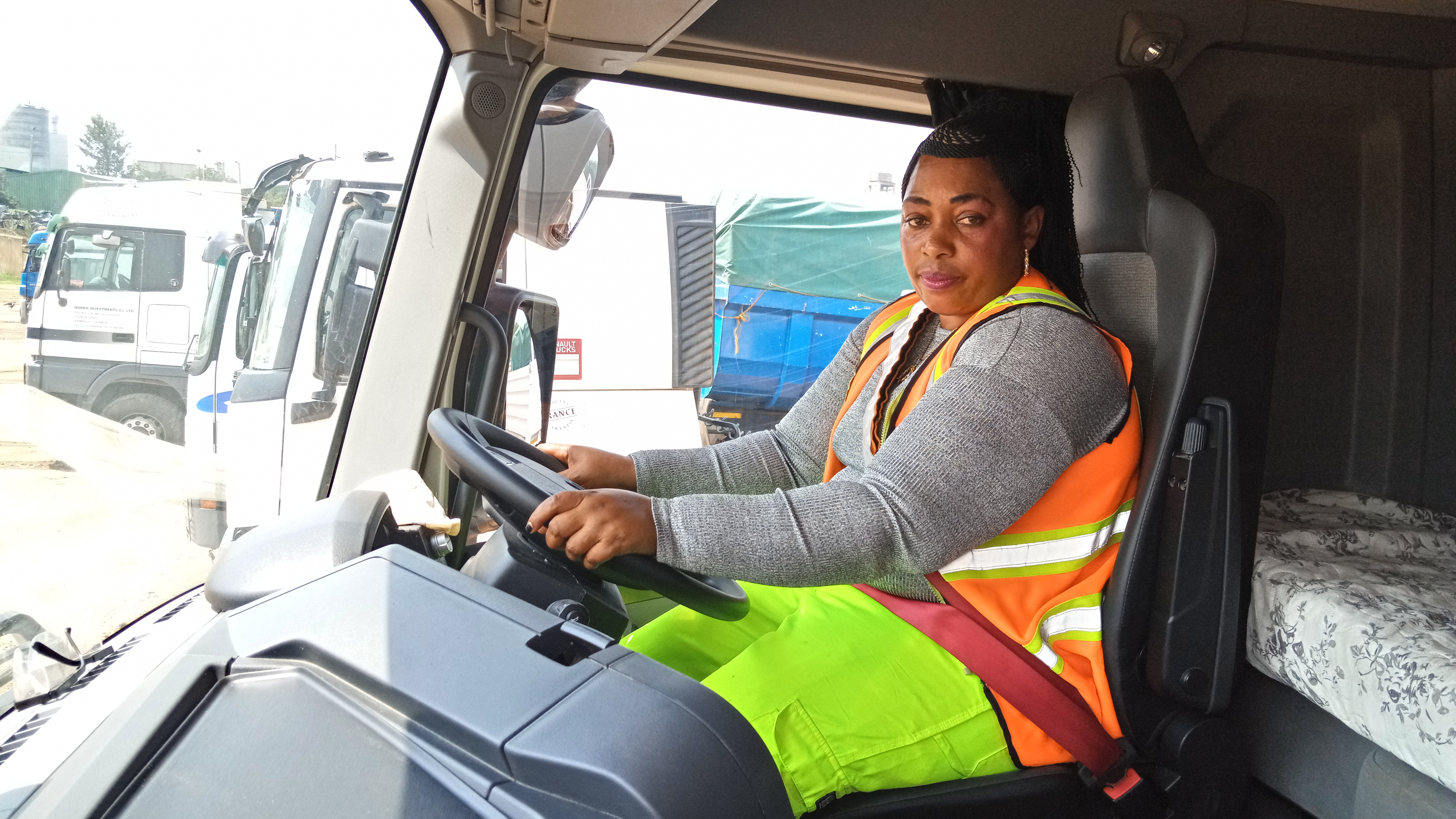Women on wheels in Uganda
Today, when companies talk about diversity, they usually mean diversity in the top management positions. But what about diversity at all levels of working ladder? What about having more women in jobs where we are not used to seeing them? At Holcim, we decided to have a closer look at these incredible opportunities. This enormous talent pool that we never tap!
With more than 100,000 trucks on the road every single day to transport our product, looking at the drivers was an obvious choice. Of course, one of the difficulties is that 95 of these are contracted, but this makes the challenge even more interesting. In addition to the increased talent pool, having more women behind the wheel brings clear safety, running cost and maintenance cost advantages, which makes this a true win-win program.
Women on wheels - The Uganda experience
In an effort to manage increasing third-party transportation costs, in December 2018, our team in Uganda embarked on a strategy to create a company-owned fleet through truck leasing. At the same time, to further the diversity agenda, the Hima Cement leadership team made a decision to hire 50 female drivers for this company owned fleet. As the drivers for this fleet are entirely within Hima Cement operations, there has been a significant positive impact to road safety. We are able to monitor and enforce compliance to Group standards for all fleet drivers and use this as a benchmark for our transporters. The strategy to own a fleet driven by female drivers has been positive for customers. This was a significant development in the Ugandan market, not only the public could see female drivers in big trucks with trailers but also it is on record that the female drivers consistently deliver product on time compared to their male counterparts.
Hiring process
The hiring process is done through our partner, a professional contractor in supplying and managing Heavy Goods Vehicle (HGV) drivers. With the exception of the required road driving experience (two years, rather than five for males), all qualifications are the same for men and women. The practical assessment through a licensed driving and training school is also the same. The first obstacle to overcome in such a program is to attract women, going against all stereotypes linked to this profession. To stimulate interest of female truck drivers in Uganda, our partner is working on a country-wide program which:
- works on culture and perception change about truck driving being also accessible for women.
- offers free driving lessons and training for women.
- supports women in acquiring and upgrading their driving permits.
We have also encouraged all the material suppliers to hire female drivers, and so far one contracted transporter has hired two female drivers. Currently, the Hima owned fleet comprises 40 female drivers.
In a bid to retain and attract female drivers, a number of measures have been taken. These include:
- equal pay and benefits with the male counterparts.
- urgent and priority attention to their family needs (eg: female truckers are allowed to take more days of leave to catch up with family).
- regular engagement with the female drivers, encouraging sharing of opinions about their level of job satisfaction and future outlook on their position.
- The issue of security has been comprehensively addressed with the following measures put in place:
- driver rest houses at Kasese and Tororo Plants with designated female wings
- routing at the plants is done in pairs, with male colleagues, for long journeys whenever possible
- robust response to reported incidents by the Logistics team, with escalation management - female drivers are encouraged to speak up (all issues reported are addressed, nothing is trivial)
- collaborative approach where the male colleagues at the plants have been and are continually encouraged and sensitized on the importance of being an ally to the female drivers.
Performance management & evaluation
- Driving performance in all our vehicles is monitored using our four minimum road safety parameters which are speeding, harsh acceleration, harsh braking and the monitoring of hours of service to prevent fatigue behind the wheel. This system is always on, from the moment the key is turned in the ignition.
- On average over the past six months, women on wheels scores are over 20 better than average.
- With the introduction of this healthy competition, it was noted that men’s scores also improved by 3 .
In a nutshell, the female drivers have positively impacted the business especially in terms of women empowerment, culture mindset and safety within Uganda.
Mbabazi Sumayiya, 39 years: truck driver in Uganda
"I have been married for 16 years and have two children (a boy and a girl). I started driving a truck in 2004 and have worked for several companies. My work has taken me on various routes through Uganda, Kenya, Rwanda, DRC and South Sudan. Today I deliver cement for Hima Cement. It is always exciting going to new places. What I love the most about my job is the respect that comes with it and the fact that I have been able to look after my family. While on the road, other road users get amused to see a lady driving a truck. Whenever I deliver cement to customers, they feel happy to see a lady deliver cement. I encourage more women to embrace this career. Our dedication always leads to a positive outcome, and this is evident because we are setting an example for road safety and how to manage the trucks carefully."







